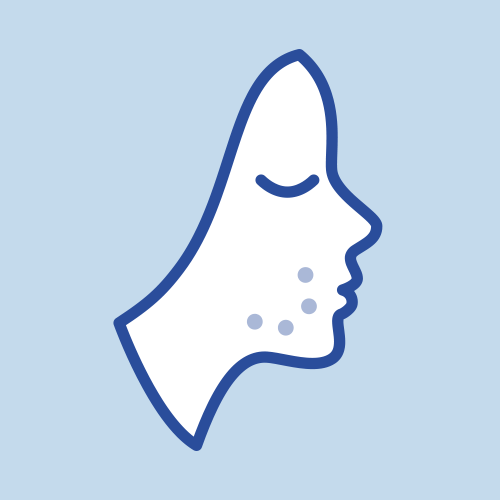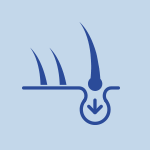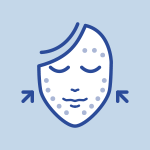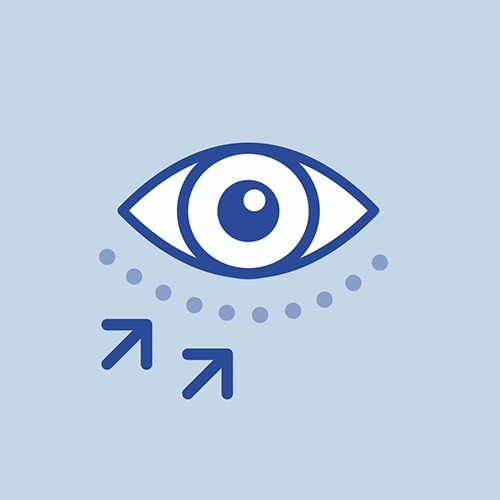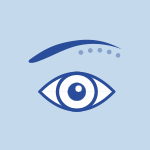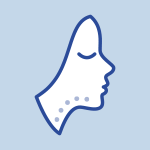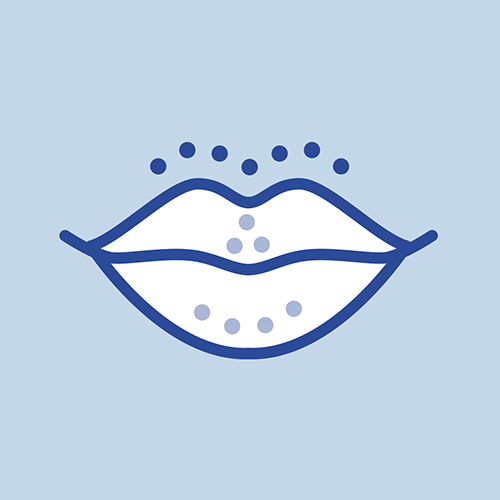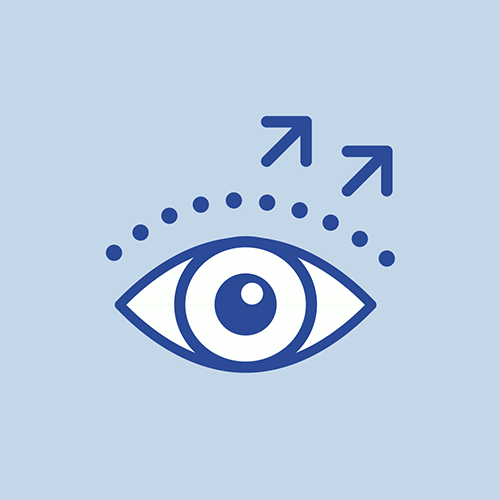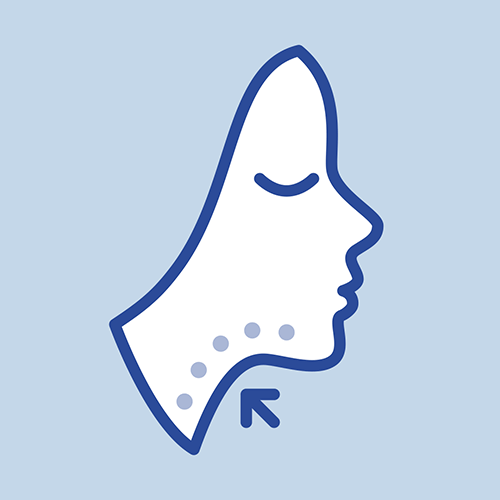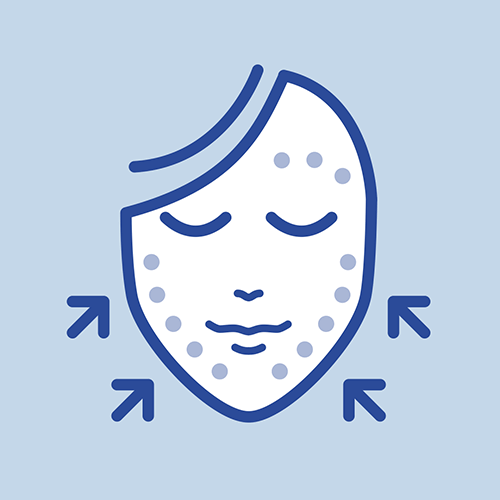Rhinoplasty is a transformative cosmetic procedure designed to sculpt and refine the nose, harmonizing it with your facial features and achieving a more balanced and attractive appearance. At our clinic, we specialize in delivering exceptional results tailored to your unique desires and anatomical structure.
Rhinoplasty
Surgical Procedures
RHINOPLASTY: Enhance Your Profile with Precision

Benefits of Rhinoplasty
- Improved Symmetry: Rhinoplasty can address asymmetry, irregularities, and disproportionate features, creating a more balanced and harmonious facial profile.
- Enhanced Confidence: A nose that complements your facial aesthetics can significantly boost your self-esteem and confidence, empowering you to face the world with renewed assurance.
- Better Breathing: Functional rhinoplasty can correct structural issues within the nose, such as a deviated septum or nasal obstruction, improving your breathing, longevity, and overall quality of life.
- Personalized Results: Our experienced surgeons work closely with you to understand your goals and expectations, crafting a customized surgical plan to achieve the results you desire.
- Natural-looking Outcome: Using advanced techniques and meticulous attention to detail, we strive to achieve results that look natural and harmonious with your facial features.
Why Choose Us for Your Rhinoplasty?
- Expertise and Experience: Our board-certified plastic surgeons are highly skilled and experienced in performing rhinoplasty procedures, ensuring safety, precision, and optimal results.
- Comprehensive Consultations: We prioritize open communication and thorough consultations, where we listen to your concerns, answer your questions, and educate you about the procedure, empowering you to make informed decisions.
- State-of-the-Art Facility: Our clinic is equipped with advanced technology and adheres to the highest standards of safety and hygiene, providing you with a comfortable and secure environment for your treatment.
- Patient-Centered Care: Your satisfaction and well-being are our top priorities. From your initial consultation to post-operative care, we are committed to providing you with personalized attention, support, and follow-up care every step of the way.
- Proven Results: We take pride in our track record of delivering exceptional outcomes and satisfied patients. Browse our before-and-after gallery to see the remarkable transformations achieved through rhinoplasty.
- Downtime: You will need to rest and recover for the first couple of weeks, keeping your activity to a minimum, and it will be a couple of months before you are allowed to return to high-impact activities or exercise.
FAQ
This rhinoplasty manual was written to help inform prospective patients about the rhinoplasty procedure performed by (Robert Chouake, MD). It does NOT apply for rhinoplasty performed by other surgeons. It has been written in a Q and A format, as it covers most of the questions patients have asked me over the years. I hope you find it informative and helpful.
I will say that patients that are always happy with their rhinoplasty result are those that understand the surgery and its limitations. Surgery is not magic and there are limits to what it can do. Surgery cannot give a person another person’s nose; we surgeons can only improve upon a person’s nose. Two, no matter how good the result is, you are going to find minor flaws. This is a fact. Understand it and accept it. A non-operated nose has flaws and so will your nose after surgery. Be mindful that the rhinoplasty process takes a full year. Swelling takes this long to subside.
Obtain extra strength Tylenol because the pain after a rhinoplasty is typically zero to minimal. You should first take extra strength Tylenol for pain. Then take Celebrex prescribed for breakthrough pain. Afrin nasal spray, flonase nasal spray, ocean saline nasal spray, and gauze.
You were given a sheet with a list of medications to avoid. These will make you bleed. If you bleed more than normal, it makes the surgery very difficult and may compromise the result. In addition, you will bruise and swell more than normal. Your recovery will take longer. Please do not take these for 2 weeks before surgery.
Some of these you must purchase over the counter:
- Extra strength Tylenol (over the counter): take as directed. Should be taken first for pain.
- Celebrex: Take 2 tablets by mouth on the first day, then 1 tablet by mouth once a day for 6 days as needed for pain. Utilize this for breakthrough pain if the Tylenol is not suffice.
- Augmentin antibiotic: take as directed. Begin the night of surgery after you get home.
- Zofran (ondansetron): take as directed if you have nausea. 4) Medrol Dose Pack: Instructions are on the back of the pill packet. Begin to take these the morning after the day of surgery
- Afrin: (over the counter) 2 puffs every 12 hours, beginning the morning after surgery. Use only for three days.
- Flonase: 2 puffs in each nostril once a day. Begin this the day the cast is removed and continue for 2 months. This helps with the inflammation inside the nose.
- Oceanspray nasal saline: (over the counter) use at least 5-7 times a day in each nostril. Begin the day after surgery and continue for 2 months.
- Bactroban (mupirocin) ointment: Apply to the nostrils with a q-tip 3 times a day starting 2 weeks before surgery and continue for 2 weeks after surgery.
The bactroban is an antibiotic cream. Most infections after surgery come from bacteria that hide in the nostrils. For this reason the ointment needs to be used 3 times a day starting 2 weeks before surgery and continue for 2 weeks after surgery. Apply it to the base of the nose where the tiny stitches are and inside each nostril. This is very important, as it will help prevent crusts from forming. There is nothing you can hurt doing this. Failure to do so means that larger crusts will form, which will be more difficult (and painful) to remove afterwards.
Typically it will take a full year for the swelling to subside. At 1 month, approximately 70% of the swelling is dissipates, at 6 months 85%, and at 1 year 100%. The thicker the skin, the longer it takes for the swelling to come down. For patients with very thick skin it may take up to 14 months.
The following things will help to reduce your swelling; sleep with your head elevated with 2 pillows, avoid salty and spicy foods, avoid excessive activity, avoid extended sun exposure, and consume fresh pineapple fruit. Pineapple contains bromelain, which helps to decrease swelling.
I am having surgery and I’m going back to work in 7 days? One of the best and easiest ways I can describe the swelling of the nose is by asking if you have you ever “popped” a pimple on your nose? Remember how the tip swells? You look into the mirror and you feel as if your nose is huge? But the average person can’t really tell? This is what the swelling feels like at about 2 months. It is something you see and feel (because you are used to your skin being tightly wrapped around your nose) but most people can’t see the swelling you see. This is the best way I can describe it.
About 50% of the patients that have surgery with me will have bruising. By the 6 th day after surgery, most of the bruising will have dissipated and what is left can easily be hidden with concealer. I attempt to do everything possible to avoid bruising and swelling. This includes the use of the Piezo machine (ultrasonic) to reduce the bony hump and arrange the bones.
You can start using it 7 days after surgery.
The two most important things you can do: 1) Avoid the medications listed on the sheet we give you and 2) Use the frozen peas after the surgery. Before surgery, you should buy peas and place 1/3 of a cup in a zip lock bag. Make several of these bags. Why peas? Because they are light and will not bother you. You place the zip lock bags over the splint on the bridge of the nose, so that it cools both eyelids. Use this as much as possible for the first 48 hours after surgery.
No. Cold does not help much after the first 48 hours.
I have heard horrible stories about packing? The nose is not packed 99% of the time. The nose is packed when there is significant bleeding after the surgery is done. If packing is needed, your nose will be packed with small cotton balls. These are removed the day after surgery and does not hurt. This type of packing is not what you have heard horror stories about.
The cast will be removed on the 5 th -7 th day after surgery. I will then see you at 2 months, and as necessary until the nose is healed.
You should sleep with two pillows for the first two weeks. Another helpful suggestion is to try one pillow and an airplane-type U-shaped pillow on top of the first pillow. This helps some patients. The reason you should elevate your head above your heart is to help with the venous drainage. This will help the swelling subside faster. You do not need to sleep on a recliner. I think a bed is much more comfortable.
The first night after surgery, the most important thing is to hydrate. Drink water, Gatorade, juices, or ginger ale. If you are hungry, eat for example a plain turkey sandwich (without mayo or mustard) or light soup. Avoid heavy soups and foods with condiments. On the second day and on, you can eat almost anything you have an appetite for. Just remember to avoid salty and spicy foods which increase swelling.
Over the next 3 weeks, the nose will gently swell. Then on the 4 th week, the swelling will start to subside.
Most patients return to work about 6 or 7 days after their rhinoplasty.
You can fly 7 days after your surgery. You should use Afrin nasal spray 30 minutes before take-off and 30 minutes before landing. This will decongest your nose and allow you to equalize as the plane gains altitude.
You can begin light exercise at 4 weeks after the surgery. If you feel that the nose swells a bit, you can cut back.
You can gently blow your nose 1 week after surgery. In the meantime, use the saline spray. Spray inside
the nostril and can expectorate through the mouth.
It will be improved significantly. The reason your tip droops when you smile is usually because the tip is weak. The cartilages that make your tip are small and lack the strength to support it. During your rhinoplasty, the tip will be strengthened. This will limit the amount of droop when you smile.
What I mean by this is that the nose will have some minor imperfections. For example you may feel a small ridge in an area. One nostril may be a little bit different than the other. There may be a small asymmetry. Remember non-operated noses are not perfect either and have many imperfections and asymmetries.
I don’t think that anything a human creates can be perfect. But it may be easier to understand this if I give you an idea of what is being done to your nose. Basically, the nose is taken apart and then put back together in the desired shape. During this difficult process, things are gained (better profile, better shape, nicer size, etc.) and things are lost (a small asymmetry or flaw). It is impossible not to lose something when there are significant gains. The important thing is that the gains greatly outweigh the losses and that your nose will look much better.
You should not have a rhinoplasty if you are expecting perfect results
Two words. Photoshop and makeup.
If the imperfection is visible (more on this later) and significant (detracts from the nose), I will fix it. If it is not visible (for example, you “feel” a bump but cannot see it) it is not worth fixing. We have to weigh the risk of going back into the nose versus leaving the small insignificant imperfection.
The nose is one of those few places where the skin is thin (doesn’t have much fat or muscle under it) and it overlies bone and cartilage. In addition, the skin thickness varies along the length of the nose. For these two reasons, it is normal to feel small bumps on the skeleton of the nose. This occurs in both, operated noses and non-operated noses. If this occurs on your nose, it is not a big deal, as many non-operated noses also have this. It is not worth trying to fix this because there is a risk every time you operate. It is not worth trying to fix something that is not visible, as you may end up with another problem, maybe one that is visible.
It is normal for the tip to appear at a high position at first. Yes, it will come down. It is important to be patient during this time and understand that everyone’s tip is always elevated after surgery. The tip will come down over the next few months. The tip usually settles to its approximate position over the next 4-6 months. In some patients it occurs faster and in some it may take longer.
The stitches in the columella (the column between both nostrils) where the small incision is are trimmed. I don’t remove and pull them because this would be painful. Instead we trim them at the base so that they are nearly invisible. They will dissolve. If at the 6-8 week visit they are still there, they will be removed.
It is normal to be stuffy. The day after surgery, begin to use afrin nasal spray (over the counter, use as directed), This will help to decongest the nose. However, do not use afrin for more than three days. Starting the day after surgery, begin using OceanSpray nasal saline. Use this saline spray frequently, as there are no restrictions on how often you can use it. It should be used AT LEAST 5 or more times a day. The way to use it is by spraying it in each nostril, breathing it deeply in and then expectorating it out through your mouth. You should continue to do this for 2 months or until you feel that you are breathing much better. The day the cast is removed, start using flonase nasal spray (in addition to the saline spray). Use 2 puffs in each nostril once a day for 2 months. Make sure to use Flonase after the saline spray to ensure that the medication is not washed away
No. The two things I guarantee every patient are: your nose will look much better and it will look very natural. It will look like a nose that you could have been born with.
Natural and perfect are two different things. In rhinoplasty, a natural result is a nose that does not look operated. The result I give you will be natural. A perfect result is one without any flaws. The result I give you will be natural but will have some flaws. The bodies we are born with are natural but have flaws. It is therefore impossible to surgically reshape a nose without having some minor flaws.
What are things that can affect the final result? I will not leave the operating room until I can achieve the best result possible. That is my commitment. But I am also honest and realistic. Even if everything in the operating room is done perfectly, the nose will not be perfect. Why? The lower 2/3 of the nose are made of cartilage, which can sometimes be very difficult to control and shape. Additionally, the cartilage in the septum is used to shape the nose. Some noses have very weak septal cartilage or a very small amount. These are issues I deal with often and they make the surgery more difficult than it already is. Post-operatively, things don’t always heal perfectly. Swelling, scarring, healing. These are all things that are out of our control that also affect the final result.
There are several reasons why a nose cannot be completely straightened. More often than not, the nasal deviation is also accompanied by a significant facial asymmetry. If the base (facial skeleton) on which the nose rests on is asymmetric, the nose will always deviate since we cannot correct the facial skeleton asymmetries. Often times, the deviation comes from the perpendicular plate of the ethmoid (the part of the septum that connects to the base of the skull. It is for these and other reasons, that straightening a crooked nose is one of the most difficult and challenging things to do in a rhinoplasty. In trying to straighten a nose, many different techniques are used together to try to achieve the straightest nose possible. This is why I tell patients that the nose will be straighter, but not perfectly straight.
No. A septoplasty by itself is a functional surgery that will straighten the septum INSIDE your nose and improve your breathing. A septoplasty does not change the appearance of your nose. A rhinoplasty along with a septoplasty is what is required to straighten your nose.
The reason you nose widens when you smile is because the smile muscles pull the sides of the nose (and mouth) apart when you smile. There is no physical way of preventing the nose from widening upon smiling.
Why do you have to break it? What exactly is this and how is it done? After the hump of the nose is brought down, the bridge becomes wider. Think of a cone as seen from above. If you slice the top off, it now appears wider. So in order to narrow the bridge again, the nose must be broken. If your nasal bones are wide, this is another reason why the bones need to be broken. Breaking the bones is done through osteotomies or the use of the piezo (ultrasonic machine)
The rhinoplasty I perform is done by changing the size and shape of the nasal skeleton. This is done by removing cartilage and bone from the dorsum (bridge) of the nose and then narrowing the nasal bones (the bones make up the upper third of the nose). The tip is then reshaped by supporting the nasal tip with cartilage (obtained from the septum inside the nose) and changing the shape of the tip cartilages with special stitches. The name of this type of rhinoplasty I perform is called STRUCTURAL RHINOPLASTY because the structure is reshaped. In certain noses, a different technique called PRESERVATION RHINOPLASTY is used to reduce the nasal hump. This involves reducing the hump from the bottom instead of from the top.
No. Many surgeons still perform what is called REDUCTIVE RHINOPLASTY. In this type of surgery, the nose is made smaller by removing cartilage and bone from the bridge and tip. However, the results can be less predictable and may change over time. This approach often leads to complications such as collapse, pinched nasal tips, visible irregularities, and difficulty breathing through the nose.
I perform both open and closed rhinoplasty. Depending on what needs to be done to your nose, I will recommend either open or closed surgery. In an open rhinoplasty, a small incision is made on the columella to access the tip and bridge, while in a closed rhinoplasty, all incisions are made inside the nostrils. Typically, if work on the tip is needed, I will recommend an open approach. Some patients are concerned about the small external incision in open rhinoplasty, but this incision heals very well and is barely noticeable over time. Another difference is the healing process. In closed rhinoplasty, the tip is minimally altered, leading to less swelling. However, my primary focus is on achieving the best possible result for your nose. Based on this philosophy, I will recommend the approach that I believe will provide the optimal outcome.
Removing a hump without touching the tip will usually lead to a tip that falls or droops over time.
In simplest terms, a graft is tissue (can be cartilage, bone, skin, or soft tissue) that is taken from one place in the body and placed in another location. In rhinoplasty, most of the grafts used are cartilage. Occasionally, soft tissue grafts are used (see below). The cartilage grafts in rhinoplasty are used to:
- Help shape the nose
- Prevent irregularities from forming as the nose heals and
- Provide support to the tip.
No, sometimes I will use a soft tissue graft obtained from the area behind or above the ear to add height or camouflage irregularities in the nose.
No. The cartilage is to shape the nose, not to make it bigger. In some circumstances, the cartilage is used to make the nose bigger, but this is usually for revisions where too much was taken out.
In most cases, the cartilage is taken from the septum. The septum is the wall between the nostrils made of cartilage and bone. The cartilage inside the septum is the best quality cartilage in the body. It is strong and does not warp or change shape over time.
The only reasons I would have to use your ear cartilage are if you did not have any cartilage in your septum left over from a previous septoplasty or the cartilaginous portion of your septum was small. If ear cartilage was taken, you will have a small dressing on the ear. Do not attempt to remove it as it is sutured to the ear.
No, it is not bad. You don’t have any cartilage available in your septum because you either had a septoplasty or a rhinoplasty in the past where the cartilage in your septum was removed. In some cases, cadaveric rib will have to be used. These are processed and do not have any living cells. They are routinely used by neurosurgeons and orthopedists for reconstruction of the cervical spine among other surgeries
No. Everyone that has had a septoplasty in the past has very little cartilage left in the septum. A septoplasty is a functional surgery to straighten the septum. This is done by removing the cartilage and bone to improve the airway.
Yes. Ear cartilage is weak and has many curves. For these reasons, it is not as good as septal cartilage for certain things. There are things that can be done with septal cartilage that cannot be done with ear cartilage.
No, the skin cannot be removed in a rhinoplasty. After the surgery is done, the skin is laid back down. The skin will contract around the new framework.
Thick skin limits the amount of definition that can be achieved with surgery. Think of laying a thin bed sheet over a sculpture. You will see many of the details, as the sheet lays over it. Now, think of laying a thick duvet cover over the same sculpture. You will see much less detail. This is exactly what happens with thick skin. In addition, the nose cannot be made small with thick skin, because definition will be lost. The smaller the nose with thick skin is made, the thicker and bulkier it will appear.
If you have very thin skin it means that irregularities can be more easily seen. Typically, normal skin has a certain thickness that can help cover small irregularities that may normally arise during a rhinoplasty.
It is normal to bleed a bit after surgery. Replace the nasal drip pad as needed. The bleeding usually stops by 10 or 11 pm the night of surgery. If it does not stop or there is a continuous stream coming from the nose, please call me. If you are concerned, please call me.
No, this is common, as sometimes there is a little bit of bleeding as the nose is healing. Soak a small cotton ball in afrin and place it in the nostril that bled. The afrin is a vasoconstrictor (shrinks blood vessels) and will stop these small vessels. Leave in there for 10 minutes and then remove it.
Yes. The sutures inside the nose are allowed to dissolve on their own. Occasionally, one will stick or poke out of the nostril. You can cut it with a pair of small scissors just as it comes out of the nostril. The part left inside will dissolve.
Yes, this is normal. As the nose heals, the tissues contract, causing the smile to feel and appear different. Once the area heals, your smile will return to normal. This may take up to 2 months.
It’s normal for the tip to be swollen at this stage. Swelling typically resolves as follows:
- At 4 weeks: about 70% of the swelling will resolve.
- At 6 months: about 85% of the swelling will resolve.
- At 1 year: nearly 100% of the swelling should be gone.
This period can be challenging for some patients, who may feel anxious about the appearance of their nose, thinking it still looks puffy. It’s crucial to be patient during this time. Certain factors can exacerbate swelling, including exercise, salty foods, spicy foods, and prolonged sun exposure (such as sunbathing or boating.
It is either one of two things. One, it can be dry blood inside the nose. Two, it can be the stitches. The stitches I use during rhinoplasty are all absorbable (they dissolve). As this occurs inside the nose, some patients with appreciate an odor. Both of these can be can easily be treated by mixing bactroban (mupirocin ointment that was prescribed) with oceanspray saline. Mix about a 6 inch strip of the ointment inside the bottle of oceanspray saline and use this 5 times a day for 7 days. Do not swallow this. This will eliminate the odor
Yes. In order for the nose to maintain its shape over time, the tip was strengthened. This will prevent the tip from drooping over time. It also allows the tip to maintain its definition. Remember, a weak tip will droop causing it to look wider. We want to avoid and prevent this.
How often does this happen? Do you charge for this? The most common reason I need to revise my own rhinoplasty work is when the bridge of the nose is left 1 or 2 millimeters too high, resulting in a slight visible bump. This can happen because there’s a point during surgery where you must decide whether to stop removing tissue or continue. Sometimes swelling or blood makes it difficult to see clearly, and it may seem that the hump is perfectly straight on the operating table. In such cases, I prefer to err on the side of caution and stop. My rationale is that it’s always possible to remove a little more in a secondary procedure, but it’s very challenging to add more if too much is removed initially. I do not charge a surgeon’s fee for any revisions. However, there are costs associated with anesthesia and the facility. Most of these minor revisions can be performed under local anesthesia in about 30 minutes
Transform Your Appearance, Transform Your Life
Discover the confidence and satisfaction that comes with a beautifully sculpted nose. Schedule a consultation with us today to explore how rhinoplasty can help you achieve your aesthetic goals and unlock your true potential.
Individual results may vary.
I recently had a rhinoplasty and septum surgery with Dr. Chouake, and I’m extremely pleased with the results. Not only can I breathe comfortably now but my nose also looks amazing and really enhances my profile. Dr. Chouake was very attentive, and made sure I understood the whole process. His work exceeded my expectations, and I would highly recommend him to anyone considering nose surgery.

Book an Appointment
Other procedures will increase surgical time and recovery.
Results vary between patients, based on health, skin quality and other genetic factors.
Risks associated with all surgical procedures.
Recovery times will vary.
Can be performed with IV sedation/twilight propofol anesthesia if requested.
To learn more about this surgical procedure, contact our office at (332) 216-0176


